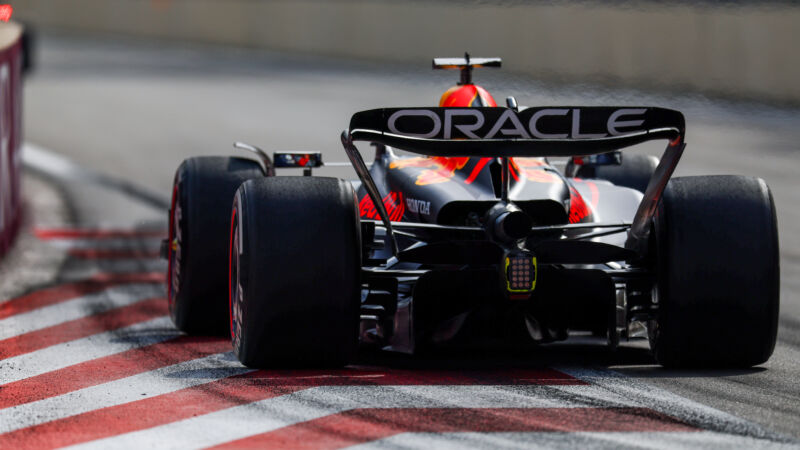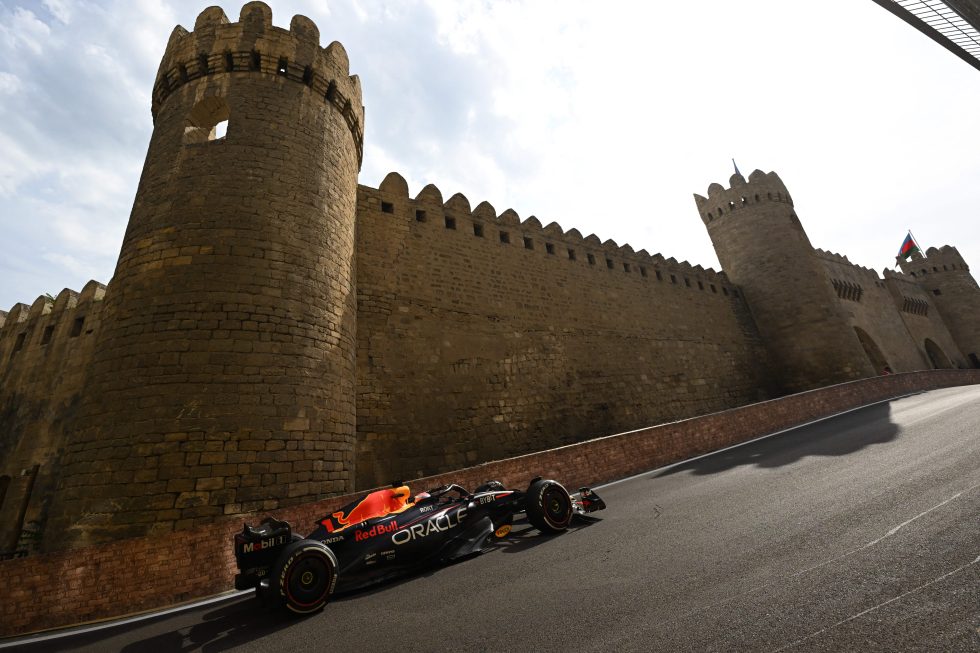F1 Wants To Ban Tire Heaters—heres Why Thats A Good Idea

Last weekend, Formula 1 held its annual road race in Azerbaijan. The city of Baku, which has a very fast track, held very exciting races. Not this year. But there is at least one race to look forward to this weekend when the World Endurance Championships take place in Belgium. Looking at these two, I think it's about time F1 ditched some driver assistance systems.
Part 1: The Problem of Stopping DRS
It's a problem that Formula 1 has faced repeatedly this year. One team designed the car better than the other and if Red Bull Racing stays reliable they are sure to win the Drivers' and Constructors' Championships. It's not Red Bull's fault they've done better than everyone else this year, but their lead has been bolstered by the technological madness added to the sport a couple of years ago and they're looking to extend their lead.
It's called DRS (Drag Reduction System) and was introduced in 2011 to solve the problem of one F1 car not being able to overtake another F1 car too closely.
At the time, F1 cars generated a lot of downforce from the front wings. But wings generate more downforce in clean air than in turbulence, and F1 cars also generate dirty air behind them. So if you follow a car too close, the car behind will go sideways (or down) and lose time. And the ability to survive. .
That made racing very boring, so DRS was introduced. On certain sections of the circuit, providing the following drivers are within a second of the car they are chasing when the DRS button is pressed, the main portion of the rear wing is lowered, reducing the drag generated by the car and yielding some. - The speed of something.

The first reason I think it's time to get rid of DRS is that F1 is dying out and changing the way underpowered cars are allowed to drive rather than adding a tech crank. F1 cars use sculpted bodywork with a profile that affects the ground, rather than relying on the front bumper and the way airflow travels over the car. This makes it more prone to washing behind other cars and indeed since the new tech regulations came into effect last year we've seen F1 cars driving very close together.
Since you can lock up cars in the new cars, it's time to grab the practice gear, or more specifically, grab the practice covers and see if you can do it without help. I'm sure they will.
The second factor is how well Red Bull performs with DRS in the RB19. Basically, folding in the main part of the rear wing caused the airflow to stop at the wing spar and also slowed down the ground. As a result, the RB19 is unstoppable, 12-15mph faster than its rivals from last weekend.
I don't think the DRS ban will stop the RB19's dominance – it's too fast in the corners for that and both Red Bull drivers are at their best. But at least it makes them work a little harder for the trophy.
Part 2: Losing your tire warmers isn't the end of the world
One of Formula 1's measures to reduce energy consumption is the ban on the use of electric tire heaters during the race. F1 tires run at around 100 degrees Celsius and are heated for hours before being attached to the car during pit stops, 10 per car, to help drivers.
The more tires run at that temperature, the more electricity they receive, and in 2022 the rules will be changed to allow five tires to reach a maximum temperature of 70°C. They met a lot of resistance from drivers and other people.
Complaints are understandable - cold running wheels can work better or more than Bakelite the first time, so the workload increases and some get stuck and lose. Luckily, F1 should be made up of the best drivers in the world. IndyCar forgoes tire warmers, and top speed on cold tires is a skill that helps separate the great contenders from the mediocre.
Earlier this year, the World Endurance Championship discontinued tire warmers. Like Formula 1, the WEC is trying to reduce its carbon footprint and removing tires also reduces the number of tires a team can use.
Last weekend, the WEC raced at Spa-Francorchamps, a long and hard-paved circuit in the forests of the Ardennes, often inhabited by different microclimates at the same time. With the cold and wet weather early in the competition, some teams were running on wet tires that took a long time to wear out, while others were running on slick tires before finally getting down to business.
As in F1, the step was frowned upon by drivers and Ferrari was furious after losing one of their 499P to cold tires after a pit stop. But with rare exceptions, they all do a great job and add drama to the show.
- I went to Sebring in March because it was the only stop in North America for the World Endurance Championship and I wanted to see the new hypercar in action.Jonathan Gitlin
- Toyota started 2022 with the GR010, so they've had wins all year. Sebring in March was the first race for most of the competitors, now they are ahead of Le Mans in June.Jonathan Gitlin
- The Penske Porsche team will compete in the Endurance World Championship with two Porsche 963s. The first brand 963 came to Spa with Team Jota supported by Tom Brady. The 963 wasn't very competitive at Sebring or Portimao in Portugal, but it looked fast in Belgium.Jonathan Gitlin
- The 499P is a great race car and could have won if the AF Corsa team hadn't made some strategy mistakes early in the race.Jonathan Gitlin
- The same cannot be said about the Peugeot 9X8, although the Peugeot team started racing this car in the middle of last season.Jonathan Gitlin
However, that's not the only reason Six Hours at Spa is such a good show. The new hypercar class has attracted a wide range of participants including Ferrari, Cadillac and the now confirmed Toyota GR010, all trying to create fast sports cars. A wingless Peugeot 9X8 is out of the question on the Le Mans straights just yet, but it looks pretty cool, so I'd like to do well. There are some brave individuals from the Glickenhouse and Floyd Vanwall crews. To be fair, when the WEC visited the bumpy concrete of Sebring in Florida in March in what looked like a team race, none of that happened as F1 beat everyone else that year.
All the other teams still have a long way to go before they are on the same form as the Toyota Gazoo Racing boys, but this year Toyota will face real competition at Le Mans for the first time since 2017. Diversity strengthens ecosystems and diversity makes breeds better.
There's also good old chaos. Several Aston Martin GTs have been misbehaving with other cars on the track for some time. I've seen some pretty amazing things like LMP2 cars driving side by side at Au Rouge and even stopping when someone comes in for a wheelie. Then the radio turns off all four wheels. Skip to 6 minutes and 37 seconds into the embedded highlights video to see how it ends.
Watch the full six hours if you can - after years of neglecting Toyota as the only OEM in the prototype class, it looks like the WEC could be good again.
WEC and IndyCar fans won't be put off by any series that doesn't use tire warmers, and even if they have spark for 2024, F1 won't.


